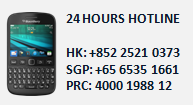USA

Bayonne Bridge - port of New York and New Jersey
The situation
The US Coast Guard has issued a notice to warn vessels about possible air draft clearance issues when passing under the Bayonne Bridge.
Members should always check the free air draft - for the actual time of their vessel's transit - when a planned route will see the vessel pass under bridges or other structures which may limit the free space available.
The Bayonne Bridge
Members calling at New York and New Jersey will be familiar with the sight of the Bayonne Bridge, which is amongst the largest steel arch bridges in the world, build between 1928 and 1931, and standing at 151 feet above the water.
While massive in its youth, it poses a challenge to today's large vessels, in particular the big container ships which are headed for the ports of Newark, Elizabeth and Howland Hook.
There are plans to raise the air clearance of the bridge by up to 64 feet in order to allow larger vessels better access to these areas. This work is underway and may be completed by the end of 2015.
At present, however, this bridge has posed a challenge to some vessels calling in the area, and the US Coast Guard New York section recently warned vessels to pay attention to the free air clearance available. This apparently followed two separate incidents of vessels coming in to contact with the bridge.
Loss prevention advice
Bridge teams should always conduct careful passage planning in order to ensure that accidents with structures like bridges are avoided. That means paying attention to the likely free air draft to be encountered at the time the vessel will be passing under a particular bridge.
It will be useful to seek advance information from local shipping agents as air draft may be affected by:
- tides and seasons
- dredging work (or lack thereof)
- construction work
The responsibility, however, to ensure that a vessel can indeed safely arrive, stay and depart from a particular port may be contractually assigned to a charterer, depending on charterparty terms.
Charterers should therefore consider in advance of a fixture whether a particular vessel, in ballast or laden with cargo (including deck cargo), will be able to safely proceed along an intended route between load and discharge ports. That may mean having to seek advance information from local agents as well as advance planning about proposed stowage of cargo, to ensure air draft limitations are recognised and accommodated.
Should members have any queries in respect of this matter, they are asked to contact the Association: lossprevention@skuld.com





